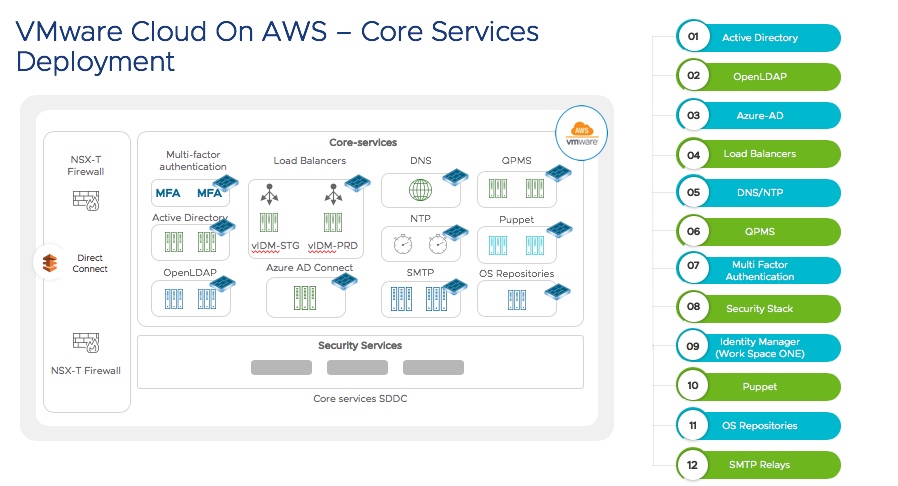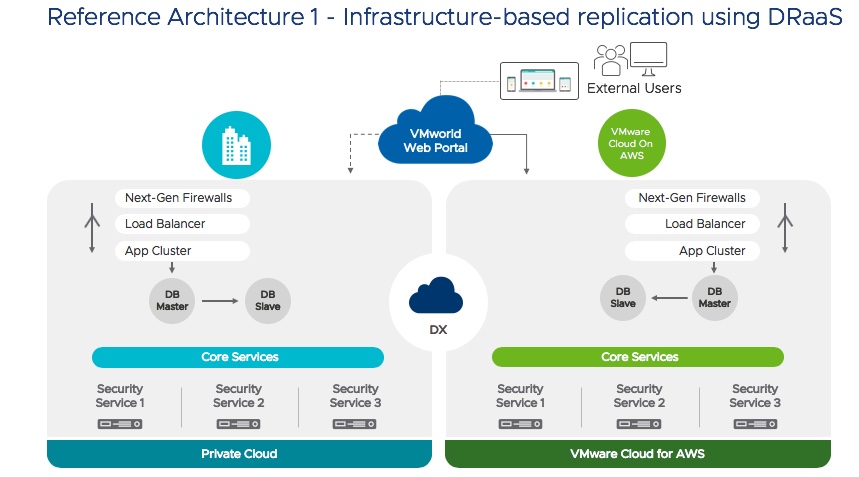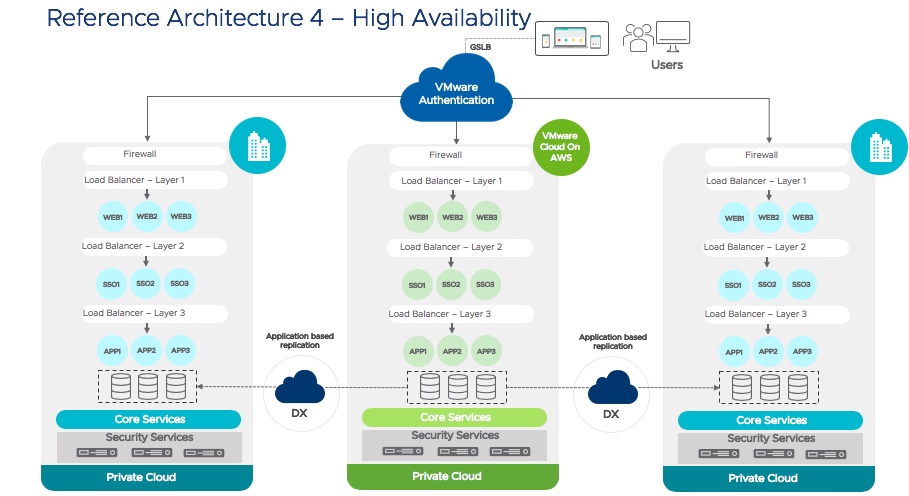by: VMware Director, Solutions Engineering and Design Swapnil Hendre; VMware Associate Manager, Solution Services Preethy G; and VMware Lead Solutions Engineer Shamika Mukane
VMware’s rapid organic and acquisition-based growth prompted VMware IT to look beyond the existing on-premises (private cloud infrastructure) to the public cloud to meet the increased demand for compute resources.
After exploring different options, VMware IT decided to migrate several mission-critical and core services to VMware Cloud on AWS. Taking this approach provided a unified and operationally consistent experience, whether workloads were located on-premises or in a public or private cloud. Migration to VMware Cloud on AWS also replaced upfront CapEx expenditures with cost-effective, on-demand OpEx for Disaster Recovery. VMware Cloud on AWS allowed us to easily contract or expand IT capacity as per fluctuating workload demands, especially in the case of acquisitions, which eliminated the cost of maintaining CapEx for on-premises hardware that was no longer needed or became obsolete.
Laying the groundwork for migration to public cloud
Before committing to a full-scale migration, VMware IT had to make sure all the basics were in place. Initially we used a site-to-site (S2S) VPN tunnel to establish connectivity from on-premise to VMware Cloud on AWS quickly. Later, the team built a cloud connectivity solution employing AWS Direct Connect to provide dedicated, low latency, cost-effective, and secure connectivity regardless of the application.
Network connectivity

Core services
To ensure a seamless migration and to avoid dependencies on our on-premises data center, we built independent set of core services such as Active Directory (AD), DNS, load balancers, multi-factor authentication (MFA), Network Time Protocol (NTP) and the security stack in VMware Cloud on AWS. All core services along with every application deployed in VMware Cloud on AWS was secured by using micro-segmentation.

Day 2 Operations
VMware IT launched several Day 2 operations initiatives to ensure the ecosystem’s ongoing viability. VMware Cloud managed services enabled cloud administrators to focus on workload and application creation rather than infrastructure maintenance which significantly minimized errors and reduced complexity. vRealize Network Insight (vRNI) monitoring was employed to deliver analytics capabilities for software-defined networking and security. This helped in optimizing network performance and availability with converged visibility across virtual and physical networks, along with public and private clouds. vRNI was also used for planning application migration to VMware Cloud On AWS.
Three use cases validate the decision
1. Cost-effective Disaster Recovery Solution
Employing Disaster Recovery as a Service (DRaaS) allowed VMware IT to plan, test and implement a cost-effective disaster recovery solution for mission-critical applications. Instead of procuring like-for-like capacity, the team oversubscribes CPU and memory resources for DR workloads to keep cost at a minimum and additional capacity is procured on-demand for a DR event. To date, we have implemented a disaster recovery solution for 13 applications, including an ERP system, VMworld Portal, and several critical applications.


2. On-demand infrastructure scaling
Recently, VMware acquired two companies (Carbon Black, Inc and Pivotal Software) within the same time frame. VMware IT decided to employ VMware Horizon instances to meet the immediate onboarding demands of the new hires. The traditional approach to this process would have required a substantial CapEx investment in hardware and the build-out of Horizon instances in on-premises data centers. Efforts that would take at least three months to accomplish.
With VMware Cloud on AWS, VMware IT was able to provide instant access to on AWS in less than three weeks with only a one-year financial commitment. An option to either renew or decommission capacity was included without any CapEx investment. VMware IT could also increase capacity on-demand by leveraging the elasticity of the cloud.

3. High availability
VMware IT had a requirement to provide a 99.99% Service Level Agreement (SLA) for a critical application (Identity/authorization). To meet this SLA, VMware IT built a tertiary data center in VMware Cloud on AWS (US-EAST region) and used VMware NSX Advanced Load Balancer (AVI / NSX ALB) for load balancing Identity application, which provided services such as load balancing, application analytics, and security. Presently we are live with Active (on-premises) /Stand-by (on-premises) / Stand-by (VMware Cloud On AWS) topology with an eventual goal of Active / Active / Active deployment with geographical traffic distribution using GSLB (Global Service Load Balancer).

We are also working on other use cases, so check back for updates!
VMware on VMware blogs are written by IT subject matter experts sharing stories about our digital transformation using VMware products and services in a global production environment. Contact your sales rep or vmwonvmw@vmware.com to schedule a briefing on this topic. Visit the VMware on VMware microsite and follow us on Twitter.



